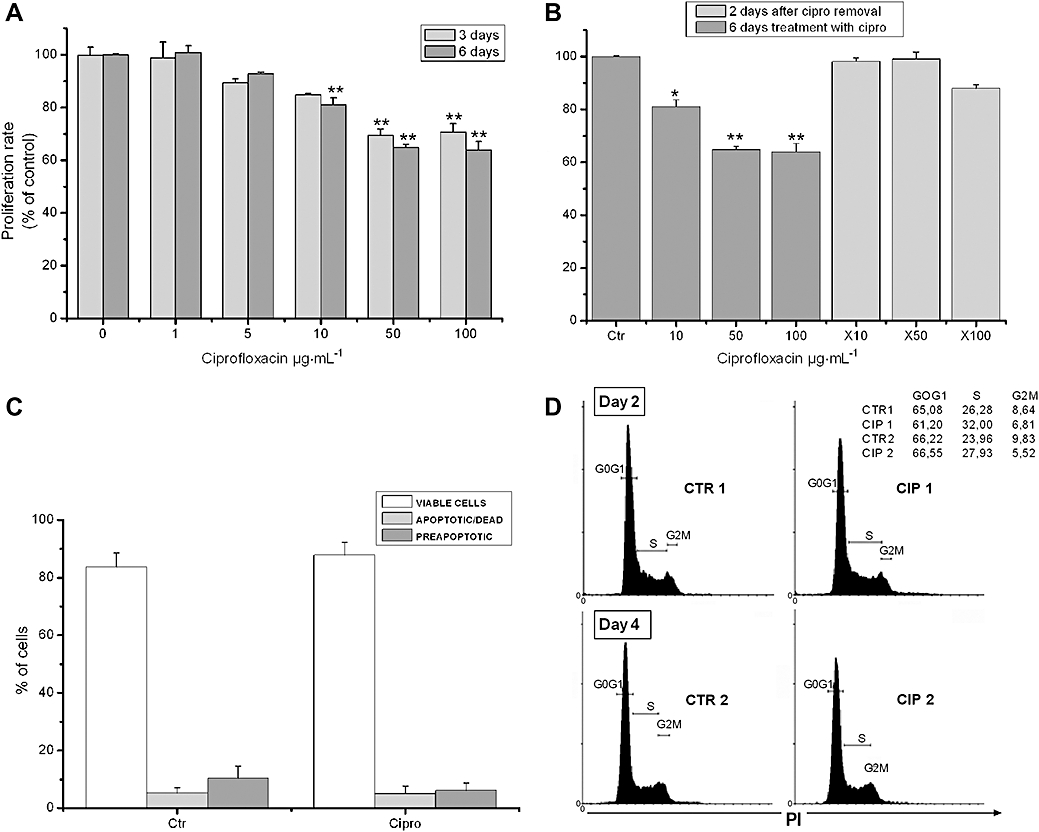Figure 1.

Ciprofloxacin suppresses HT-29 cell proliferation by inducing cell cycle arrest. (A) MTT assessed proliferation of HT-29 cells after treatment with 0–100 µg·mL−1 of ciprofloxacin for 3 and 6 days, as described in Methods. (B) MTT assessed proliferation of HT-29 cells treated with ciprofloxacin for 6 days, which was followed by removal of ciprofloxacin and subsequent 2 days treatment with vehicle; ×10, ×50 and ×100 indicate initial concentrations of ciprofloxacin (*P < 0.05, **P < 0.01 different from control values). (C) Apoptosis of HT-29 cells after treatment with vehicle (Ctr) or ciprofloxacin (50 µg·mL−1) evaluated by 7-AAD and annexin-V staining. (D) Effects of ciprofloxacin on cell cycle assessed by propidium iodide (PI) staining. HT-29 cells were treated for 2 days and 4 days with vehicle (CTR1, CTR2) or 50 µg·mL−1 of ciprofloxacin (CIP1, CIP2). Two representative graphs from six independent experiments are shown. 7-AAD, 7-amino-actinomycin D; MTT, 3-(4,5-dimethylthiazol-2-yl)-2,5-diphenol tetrazolium bromide.
